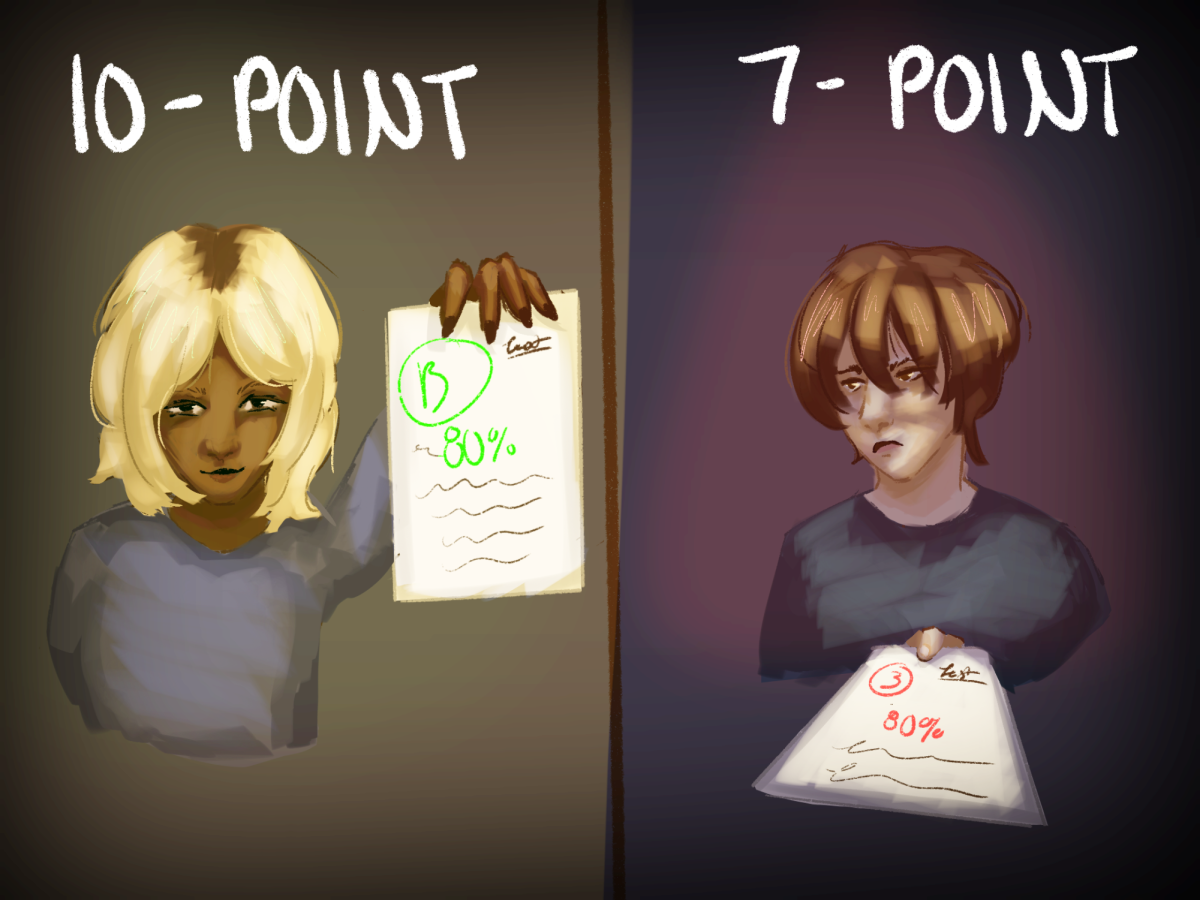Grading scales are an essential part of evaluating student success, and the differences between a 7-point and a 10-point scale can have a significant impact on student’s experiences and outcomes.
Adopting a 10-point grading scale in our school would create a fair and less stressful environment for students while easing some of the pressures on teachers. Along with this, other aspects of grading such as the use of pluses and minuses should be implemented to ensure a fair grading system for all students.
This shift would help eliminate some of the anxiety and mental stress students face under the current, more strict requirements. Namely, a student performing at 92% is probably understanding and mastering the material, yet under the 7-point scale, this effort is not rewarded with the highest mark, potentially impacting GPA and eligibility to earn scholarships. By changing to a 10-point scale, students’ GPAs could better reflect their knowledge and effort, especially as they apply to colleges and scholarships where a 10-point scale is often the norm. Moreover, using pluses and minuses in grading systems provides a more accurate assessment of student performance. Instead of broadly categorizing students with a single letter grade, the use of pluses and minuses allow for better distinctions within that respective letter grade, and better reflect that student’s understanding and effort.
For teachers, the switch to a 10-point grading scale would also bring substantial benefits. Teachers often feel the pressure to justify and defend grades to students and parents, particularly when they narrowly miss a higher grade due to a 7-point scale cutoff. A 10-point scale gives teachers more flexibility, reducing the time and effort spent on evaluating last-minute assignments, recalculating grades, and managing the administrative side of grading.
Additionally, the 10-point scale would align our school with grading practices in many colleges and high schools across the country, ensuring a smoother transition for students advancing to higher education. This alignment benefits students in the long term, as they won’t be at a disadvantage in college applications and in adapting to grading expectations.
Switching to a 10-point grading scale and pluses and minuses would be a positive step for our school, creating an atmosphere where students are rewarded fairly for their hard work and teachers can focus more on teaching than on the technicalities of grading and getting their students to passing status. It’s time to make a change that supports the success and well-being of everyone involved.














